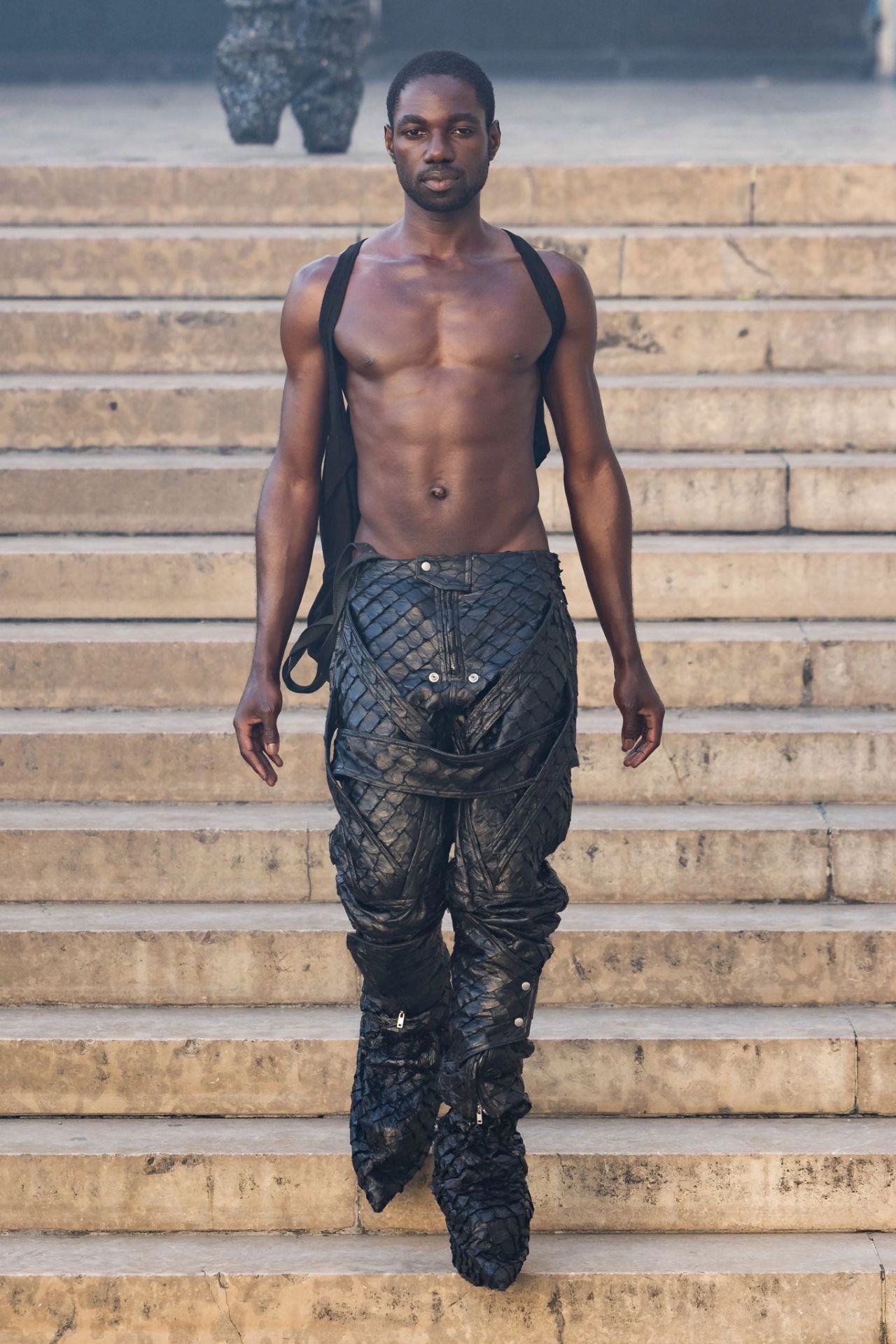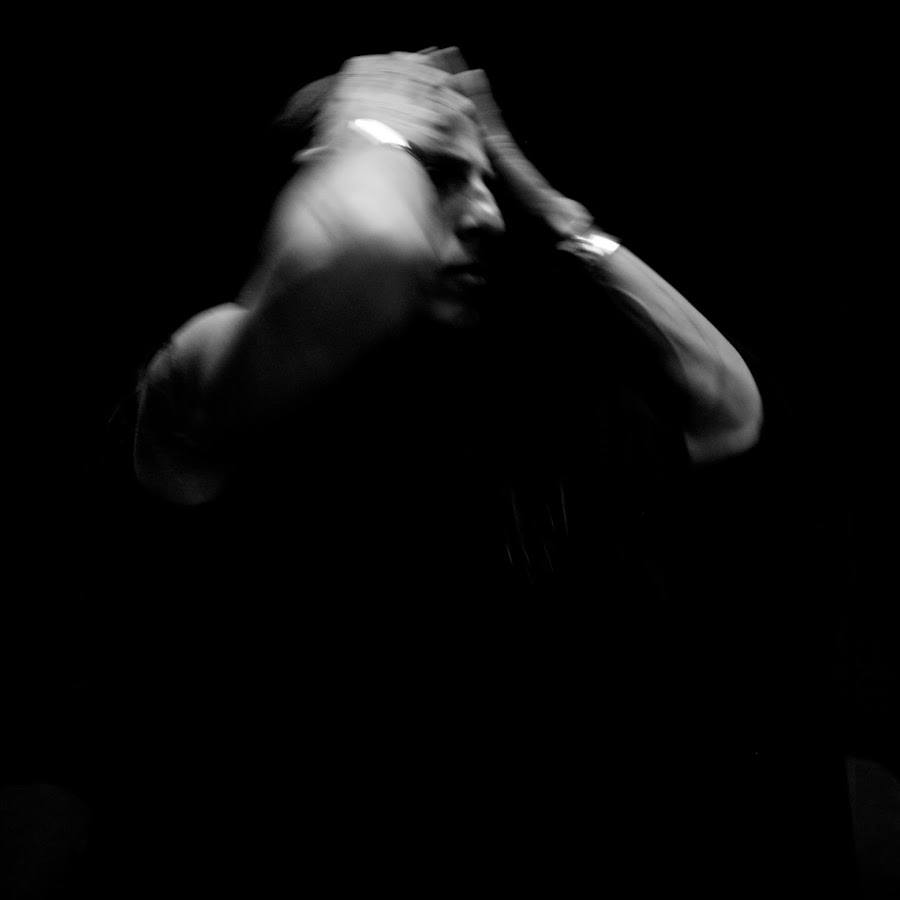Contents
Summary
Richard Saturnino Owens is an American fashion designer from Porterville, California. In addition to his main line of apparel and accessories renowned for its dark design aesthetic, Owens has a furniture line and a number of diffusion lines.
History
Rick Owens is a renowned American fashion designer known for his avant-garde and dark aesthetic that merges elements of grunge, goth, and high fashion. Born on November 18, 1962, in Porterville, California, Owens showed an early interest in fashion and design. He studied at the Otis College of Art and Design in Los Angeles, where he honed his craft and developed his distinctive approach to fashion. After graduating in 1984, Owens worked in various fashion-related roles, including a stint as an assistant designer at the apparel company “Gareth Pugh” and a brief position at the Los Angeles-based boutique, “The Gucci Group.”
In the early 1990s, Owens began working as a designer for the LA-based fashion house, “Abasi Rosborough,” and through this experience, he was able to refine his minimalist approach to design, focusing on dark, dramatic, and often oversized silhouettes. His first breakthrough came in 1994 when he established his own label, “Rick Owens.” His debut collection received critical acclaim for its unique approach to menswear, which combined traditional tailoring with a raw, unpolished aesthetic.

Rick Owens
By the late 1990s, Rick Owens had made a name for himself in the fashion world, gaining a loyal following in both the U.S. and Europe. His ability to blend couture elements with a punk-inspired edge set him apart from his contemporaries. In 2002, he presented his first women’s collection, further solidifying his position in the fashion industry. His designs were often described as “luxury goth,” incorporating asymmetry, distressed fabrics, and unconventional materials that pushed the boundaries of fashion.
Owens’ influence grew significantly in the 2000s as his collections were presented at Paris Fashion Week, where his dark and dramatic designs caught the attention of top fashion critics. He also began collaborating with notable figures in the art and music industries, such as Kanye West, with whom he developed a strong creative partnership. These collaborations further expanded Owens’ reach, cementing his status as a leading figure in the fashion world. His ability to merge high fashion with street culture became a hallmark of his work.
By the 2010s, Rick Owens had evolved into a global fashion icon. He opened stores in major cities such as Paris, Milan, and Tokyo, attracting a clientele that appreciated his bold, boundary-pushing designs. Owens continued to explore unconventional themes in his collections, with pieces that often challenged traditional gender norms and societal expectations. His collections embraced a rebellious spirit while maintaining an air of refinement, and his runway shows became as much a performance art as they were a fashion event.
Owens has authored four books — L’ai-je bien descendu? (2007), Rick Owens (2011), More Rick Owens (2023), and Rick Owens Furniture (2017), along with two books about Larry LeGaspi, which were published in November 2019 by Rizzoli. He launched five labels including RICK OWENS, DRKSHDW, RICKOWENSLILIES, SLAB, and HUNRICKOWENS. SLAB was a diffusion line that consisted of basic garments with unique finishings such as distressing, oil washing, and waxed coatings. This line was later replaced by his DRKSHDW line in 2005, which would continue the focus on basic garments with cellulose fabrics.

Rick Owens
In 2018 and 2019, he has collaborated with Birkenstock and French sneaker brand Veja, respectively. The latter collaboration continued for five seasons, with its conclusion announced in November 2021. Owens added to this series of partnerships in 2020, designing capsule collections in collaboration with Moncler and American activewear brand Champion. In 2021, Owens collaborated with footwear brands Dr. Martens and Converse
Rick Owens continues to be heralded as a legend. Post-pandemic, his SS21 collection was well received. Per Vogue, “The fascination of an Owens show is that as dark and disturbing as his theme may be—as hellish as we all feel—he inevitably leaves you galvanised. ‘In the face of adversity,’ he said, music pounding in the background, ‘we have to pull ourselves up’.”
Vision
Rick Owens’ vision as a fashion designer is rooted in the concept of pushing the boundaries of conventional fashion through avant-garde expression. He has created a distinct design aesthetic characterized by sharp architectural lines combined with flowing, asymmetrical designs. Owens’ work consistently showcases a largely monochromatic palette, which emphasizes his gothic, rebellious overtones. This minimalism, however, is far from simple; it is filled with depth and meaning, allowing his clothing to exude both power and mystery.
His designs, while avant-garde, are also grounded in a sense of timelessness. Owens has managed to merge the extreme and the wearable, infusing his collections with both extravagance and functionality. His use of dark colors, raw materials, and experimental textures reflects a consistent thematic exploration of beauty through darkness, and his ability to challenge conventional standards of aesthetics.
Owens’ strong personality and authentic style extend beyond fashion; he has earned the title “Lord of Darkness” due to his consistent commitment to gothic influences, yet his work is not constrained to this label. Through his designs, he expresses a broader philosophical outlook—defying conformity and embracing individuality. His vision has always been about creating a world where clothing acts as a form of personal armor, a way to communicate one’s inner strength and complexity.
The juxtaposition of minimalism and extravagance in his collections has left a mark on design history. Owens’ ability to blur the lines between fashion and art, while maintaining an aura of mystery and intensity, positions him as one of the most influential and enigmatic designers of our time. His work not only influences the fashion industry but also serves as a cultural statement, constantly reinterpreting ideas of beauty, rebellion, and identity.
Mission Statement
Rick Owens’ mission as a fashion designer is about redefining the boundaries of fashion by merging art, philosophy, and personal expression into a cohesive vision. At its core, his mission is to challenge and subvert conventional norms of beauty, offering an alternative narrative that embraces darkness, imperfection, and individuality. Owens seeks to empower people to express themselves authentically, using his designs as a form of personal armor that communicates strength, mystery, and rebellion.
One of the key components of Owens’ mission is to provoke thought through his body of work. He often uses fashion as a medium to explore existential themes such as mortality, identity, and societal conformity. His creations—whether they be sharp-shouldered jackets, oversized bombers, or draped, flowing garments—are designed to make a statement, urging the wearer and the observer to reconsider traditional ideas of fashion and aesthetics. Owens’ consistent use of a monochromatic, primarily black palette reflects his exploration of the darker aspects of life, both literally and metaphorically, and challenges the mainstream obsession with color and vibrancy.
Sustainability and integrity are also central to his mission. Owens has built a luxury fashion brand that expands organically, without reliance on outside investors, ensuring that his creative vision remains pure and uncompromised. His slow, deliberate approach to growth reflects his commitment to quality, authenticity, and artistic integrity. He also focuses on designing timeless pieces that endure beyond seasonal trends, encouraging consumers to invest in lasting, meaningful fashion rather than transient fads.
Awards and Recognition
A recipient of the 2002 Perry Ellis Award for emerging talent and the Lifetime Achievement Award by the Council of Fashion Designers of America in 2017, Rick Owens was also awarded the Cooper-Hewitt Design Award for fashion design as well as the Fashion Group International Rule Breaker Award in 2007. His first museum exhibition and retrospective, chronicling over 20 years of his life’s work, entitled, “Subhuman Inhuman Superhuman” opened at the Triennale di Milano on December 15, 2017. In June 2019, Owens won Menswear Designer of the Year Award at the 2019 Council of Fashion Designers of America Fashion Awards.
Products and Services
Rick Owens’ products and services are a reflection of his multi-faceted approach to design, blending fashion, art, and lifestyle into a cohesive brand identity. Beyond his main fashion line, which is renowned for its avant-garde designs, Owens has expanded his creative vision to include a range of diffusion lines and a highly regarded furniture line. Each extension of his luxury brand stays true to his core aesthetic while offering unique variations to reach different audiences and serve various lifestyle needs.
The Rick Owens furniture line includes pieces like chairs, beds, tables, and lighting fixtures, crafted from materials such as plywood, resin, marble, and bronze. Much like his fashion, Owens’ furniture designs are characterized by their stark, monolithic forms and their fusion of brutalist and luxurious elements. His furniture pieces often have a raw, industrial quality, juxtaposed with refined craftsmanship, creating functional art objects that are both imposing and elegant. The furniture line, much like his clothing, carries a unique vision that reflects Owens’ philosophy of beauty through austerity, and these pieces have found a home in high-end galleries, museums, and private collections around the world.
Beyond the tangible products, Rick Owens offers an immersive brand experience through his flagship stores, located in Paris, London, Tokyo, and New York. These stores, much like his designs, are conceived as works of art, reflecting the designer’s stark, gothic aesthetic. The flagships are often designed with brutalist architecture, featuring raw concrete, high ceilings, and minimalist interiors, creating a visually cohesive experience that mirrors the spirit of Owens’ designs.
In essence, Rick Owens has built a multifaceted luxury brand that encompasses not only fashion but also furniture, accessories, and artistic collaborations. Each facet of his offerings reflects his commitment to challenging conventional beauty standards, creating a world where art, fashion, and lifestyle blend seamlessly into a singular, cohesive vision. His expansion into these various areas reinforces his status as a visionary designer, allowing fans of his work to engage with his aesthetic across multiple aspects of their lives.
Leadership Team
Rick Owens: Founder
References
- “Rick Owens: The prince of dark design”. The Independent.
- “Rick Owens Divulges His Deepest Thoughts on Masculinity and Its Place in Fashion”. HYPEBEAST.
- Rick Owens fashion latimesmagazine.com
- “Brenda’s Business with Rick Owens”. 032c.com.
- “American Gothic”. Wall Street Journal.
- “Constructing Rick Owens’ Creative Bubble”. Business Of Fashion.
- “Rick Owens’ Prehistoric Furniture Exhibition”. HERO Magazine.
- “Rick Owens’ ‘Prehistoric’ new furniture collection”. Wallpaper.
- “Renaissance man: Rick Owens”. The Daily Telegraph.
- “CFDA FASHION AWARDS” CFDA.
- “No tricks, just rick! a candid chat with Rick Owens on the eve of his cfda lifetime achievement award”. Vogue.
- “What’s in a Rick Owens Retrospective? Whatever He Wants”. New York Times.
- “Rick Owens Wins Menswear Designer of the Year Award at CFDA Fashion Awards 2019”. WWD.
- “L’ai-je bien descendu?”. W KOREA.
- “Rick Owens on furniture, fashion and ‘fairy witch’ Michele Lamy”. WWD.
- “Rick Owens Offers Respect”. New York Times.
- “Your ultimate guide to Rick Owens”. Dazed Digital.
- “Q&A: Rick Owens on collaborating with Birkenstock, Joseph Beuys and why he’s taking his label with him when he goes”. Los Angeles Times.
- “Rick Owens teams with eco brand Veja on sneaker design”. Yahoo SG.
- “Rick Owens drops collaboration with French sneaker brand Veja”. Fashion Network.
- “Veja Releases Final Collab With Rick Owens”. WWD.
- “Moncler, Rick Owens Collaboration Not What You Would Expect”. WWD.


